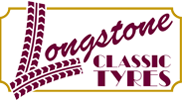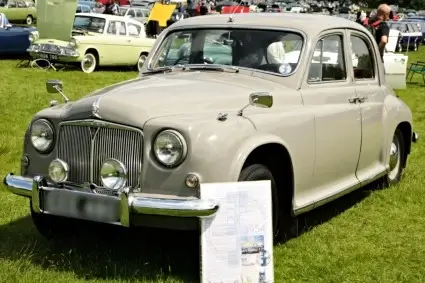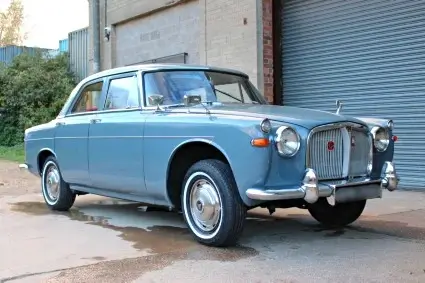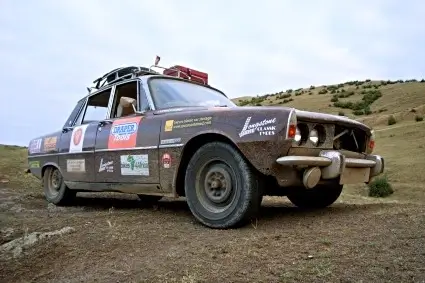Rover Tyres
Classic Rover Tyres
On the following pages, Longstone Classic Tyres give classic tyre fitment recommendations for Rover cars.
If your Rover is not listed, don't panic! Please give us a call on:
01302 711 123
or
Email: sales@longstonetyres.co.uk
Rover History
In 1883, Starley & Sutton Co. of Coventry, England, produced the first Rover, a tricycle. In 1878, John Kemp Starley and William Sutton established the corporation. Starley had previously worked with his uncle, James Starley (the bike trade's father), who began by making sewing machines before switching to bicycles in 1869. After pioneering the modern bicycle with the Rover Safety Bicycle in 1885, Rover expanded into the automobile sector. Since 1904, it has been producing bikes and subsequently automobiles under the Viking Longship brand.
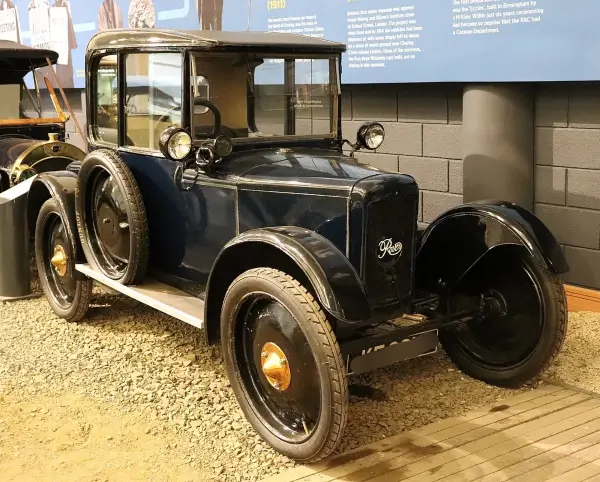
The only bikes available in the early 1880s were the relatively risky penny-farthings and high-wheel tricycles. J.K. Starley made history in 1885 when he created the Rover safety bicycle, a rear-wheel-driven, chain operated bike with two comparable-sized wheels that made it more stable than earlier high-wheel designs. Cycling Magazine said that the Rover "set the pattern to the world"; the term was implemented in their marketing for many years. Historians commonly refer to Starley's Rover as the original modern bicycle. Starley built an electric automobile in 1888, but it was never mass-produced.
J.K. Starley & Co. Ltd. was formed in 1889, and the Rover Cycle Company Ltd. was formed in the late 1890s. In November 1902, the Rover Imperial motorbike was created and manufactured by the business. This was a 3.5 horsepower diamond-framed motorbike with the motor in the middle. The spray carburettor, bottom-bracket engine, and manually actuated valves were all novel innovations on the original Rover motorbike. Over a thousand Rover bikes were sold in 1904, with a sturdy frame, two front down tubes, and a high-quality finish.
Three years after Starley's death in 1901, and the subsequent acquisition by H. J. Lawson, the Rover firm began producing vehicles with the two-seater Rover Eight based on the designs of Edmund Lewis, who transferred from Lawson's Daimler. Lewis left the firm in late 1905 to work for Deasy. Owen Clegg, who arrived from Wolseley in 1910 and began overhauling the product line, finally replaced him. After a few short-lived trials with sleeve valve engines, the 12hp model was released in 1912. This automobile was so popular that all other models were discontinued, and Rover followed a "one model" approach for a while. Clegg moved in 1912 to work for Darracq and Company London's French affiliate.
During World War I, they produced motorbikes, lorries based on Maudslay designs, and ambulances based on Sunbeam designs since they lacked a viable one of their own. During the 1920s, the company struggled and couldn't pay a dividend from 1923 to the mid-1930s. Spencer Wilks was hired as general manager by Hillman on his recommendation and elected to the committee in 1929. In an effort to conserve money, Searle broke Midland Light Automobile Bodies from Rover that year and tasked Robert Boyle and Maurice Wilks with designing a new compact car.
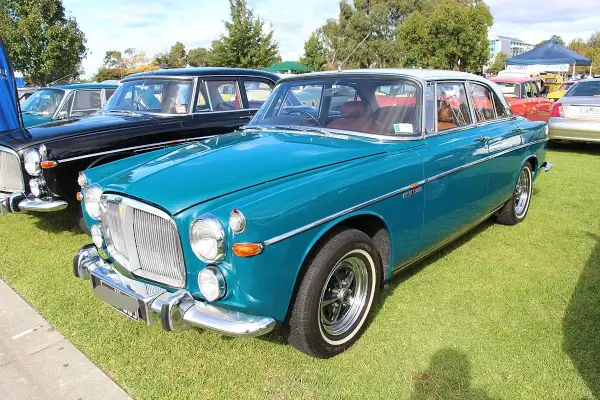
This was the Rover Scarab, which was unveiled in 1931 and had a rear-mounted V-twin-cylinder air-cooled engine. A van version was displayed at Olympia, but it did not go into production. The Rover 10/25 was launched at this period, with bodywork produced by the Pressed Steel Company. The body was the same as that used on the Hillman Minx. Previously, Rover had been a strong advocate of the very light Weymann bodies, which had fallen out of favour with the need for gleaming coachwork and more curved body designs. Weymann bodies were still available in the manufacturer catalogue until 1933.
In the late 1930s, in anticipation of the anticipated conflicts that would become the Second World War, the British government initiated a rearmament programme, which included the construction of "shadow factories" The government paid for them, but they were manned and managed by private corporations. Rover operated two: one at Acocks Green, Birmingham, which began operations in 1937, and a second, bigger one in Solihull, which began operations in 1940. Both were utilised in the production of aviation engines and airframes. The old main factory at Helen Street, Coventry, was badly destroyed by bombing in 1940 and 1941 and never fully recovered.
After WWII, the firm abandoned Helen Street and purchased the two shadow factories. Acocks Green continued to produce Meteor engines for tanks such as the Centurion and Conqueror, while Solihull became the new vehicle production centre, with production beginning in 1947. The Rover 12 Sports Tourer was introduced this year. 200 automobiles were constructed for the export market, however, they were all RHD, thus many remained in the UK. Land Rover would make its home in Solihull.
Despite the challenges of the jet turbine project, Rover was keen to develop a gas turbine engine to power cars. Rover unveiled the JET1 prototype, the world's first automobile driven by a gas turbine engine, to the public in March 1950. JET1, a two-seat open tourer, had the engine behind the seats, air intake grilles on the side, and exhaust ports on the top of the tail. During testing, the automobile hit a maximum speed of 88 miles per hour. JET1 was further improved after being demonstrated in the United Kingdom and the United States in 1950, and it was subjected to speed trials on the Jabbeke motorway in Belgium in June 1952, when it topped 150 miles per hour. JET1 is on show at the London Science Museum right now.
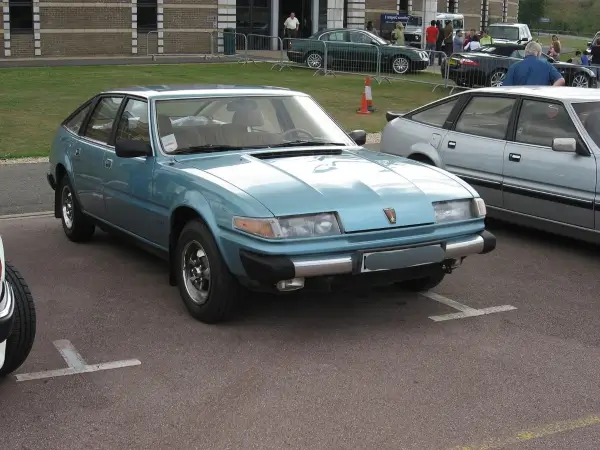
In addition to the Land Rover, Rover undertook many experimental diesel engine projects. The 2-litre, 52-horsepower diesel engine conceived and produced by Rover for their 4x4 went into production in 1956, and it was one of the UK's first high-speed diesel motors. Experimentation was carried out in order to optimise the engine's power delivery, operating characteristics, and fuel tolerances. Due to British Army needs, a multifuel version of the 2.25-litre model of the engine was developed in 1962, which could operate on petrol, diesel, Jet-A, or kerosene. Nevertheless, the engine's power output while using low-grade gasoline proved insufficient for the Army's needs.
Rover was working on a variety of unique initiatives as the 1960s came to a conclusion. Rover bought the Alvis firm in 1965 and was developing a V8-powered supercar to market under the Alvis brand. The prototype, known as the P6BS, was finished, and the finalised stylistic and technical concept, known as the P9, was created. Rover was also working on the P8 project, which sought to replace the current P5 big saloon with a new design based on a scaled-up P6. These ideas were cancelled when Leyland Motors merged with British Motor Holdings and Rover and Jaguar became business partners to avoid internal rivalry with Jaguar goods. The P8, in particular, was stopped at an extremely late stage of development; Rover had already bought the dies and stamping equipment for creating the car's body panels at Pressed Steel when production was ordered to be halted.
Rover proceeded to build the '100-inch Station Wagon,' which evolved into the revolutionary Range Rover, which debuted in 1970. The ex-Buick V8 engine was also employed, as well as the P6's unique safety-frame body structure design and features including permanent four-wheel drive and all-around disc brakes. The Range Rover was originally conceived as a utility vehicle capable of providing the off-road capability of the Land Rover in a more sophisticated and car-like form.
Rover was acquired by the Leyland Motor Corporation (LMC), which also owned Triumph, in 1967. LMC combined with British Motor Holdings (BMH) the following year in becoming the British Leyland Motor Corporation (BLMC). The independent Rover Firm's legacy was buried by the infamous industrial relations and administrative troubles that plagued the British auto industry during the 1970s, and it was the end of the road for the Solihull-based company.
